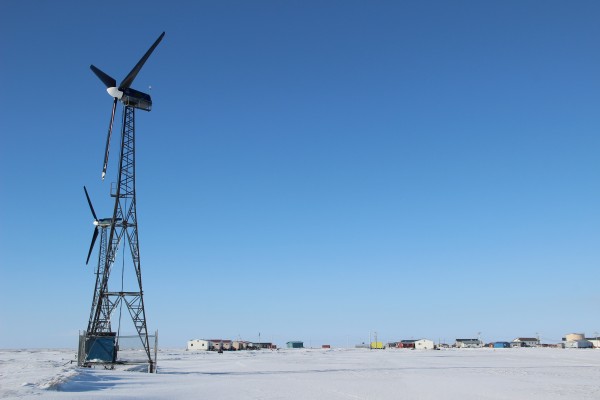
One casualty of the state’s budget crisis this year is investment in renewable energy.
Since 2008, Alaska’s Renewable Energy Fund has supported scores of projects around the state, with more than 130 currently in the works – most of them aimed at replacing expensive diesel fuel with everything from wind to hydro to biomass.
So far this year, the state budget includes no money for the fund. But a bill passed by the Senate this week would try to replace some of that funding in years to come.
Sean Skaling, policy and programs director with Alaska Energy Authority, which administers the Renewable Energy Fund, said it has been crucial in getting projects off the drawing board and onto the grid.
“I’d say what the fund has really done, over the last few years, it has made projects happen,” Skaling said.
From a wind system in Kwigillingok to hydropower in Chignik Lagoon to a biomass boiler in Thorne Bay, the fund has provided seed money or shouldered the full cost of projects across Alaska.
The Authority has prioritized efforts to reduce the use of diesel fuel, which can make lighting or heating a home in many parts of the state intolerably expensive.
“If you pay a lot for electricity or pay a lot for heating fuel, those are the projects that are most likely to rise in the criteria,” Skaling said.
In the past, lawmakers have included the Renewable Energy Fund as part of the capital budget, along with infrastructure projects around the state. It started with an initial investment of about $100 million and has received about $25 million a year since, dropping to less than $10 million last year.
But this year’s capital budget is a ghost of its former self – just $80 million, total. There’s no money included for the renewable energy grants. That means no funding for the nearly 40 projects in the running this year — from Sitka to St. Paul.
This week, the Senate passed a bill sponsored by Bethel’s Lyman Hoffman, which might provide at least some money in the years ahead.
The bill – SB 196 – focuses primarily on shoring up the endowment for the Power Cost Equalization (PCE) program, which offers relief from sky-high electricity rates in rural Alaska. But in years when the fund earns more than the program requires it would split the excess earnings between two other initiatives: community revenue sharing, and rural power projects — including the Renewable Energy Fund.
Testifying this week before the House Finance Committee, Hoffman said it’s a good use for the endowment.
“I think that it is a win-win for rural Alaska, for communities that are dependent upon revenue sharing and for other rural energy programs,” he said.
If the PCE endowment fund matches its past performance, it could generate about $3 million a year for energy programs, starting in 2018.
But first, it must pass the Alaska House. The bill is currently before the House Finance Committee, with just two days left in the regular legislative session.
